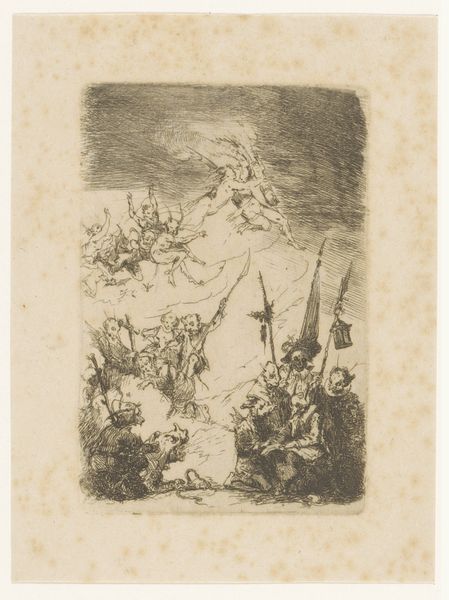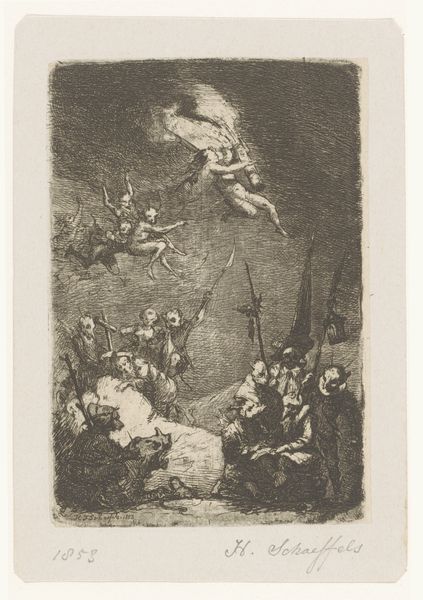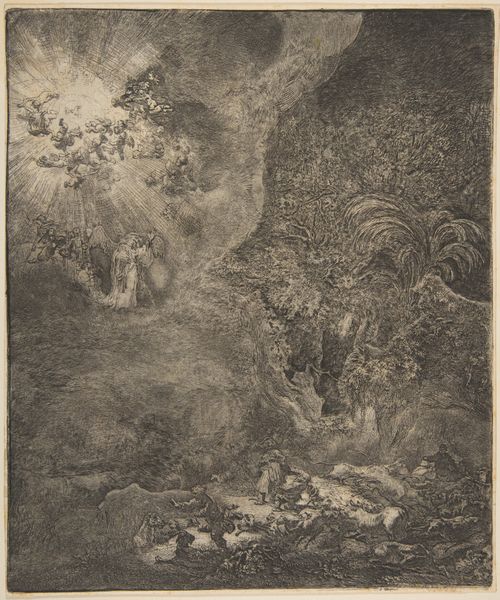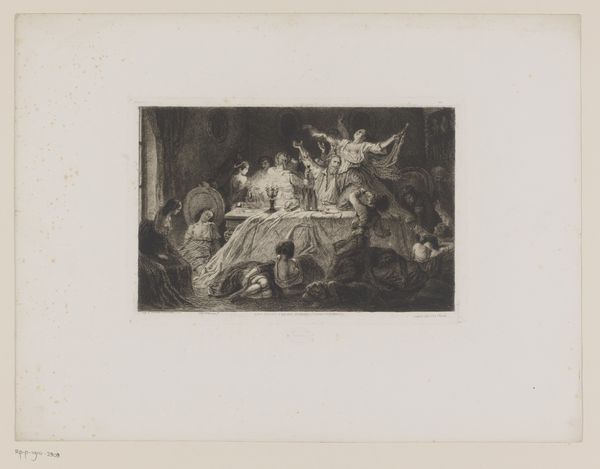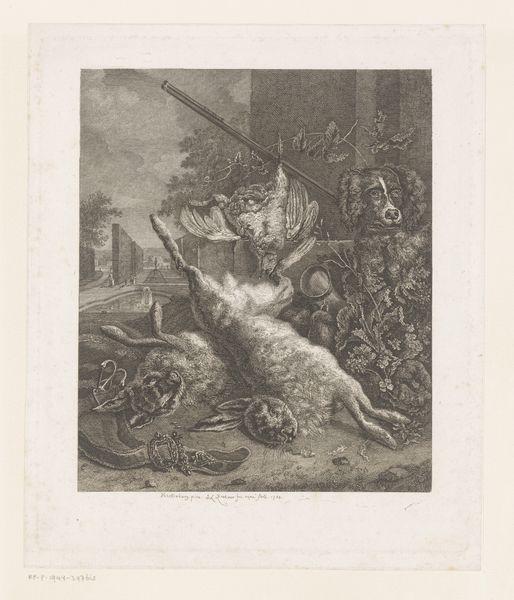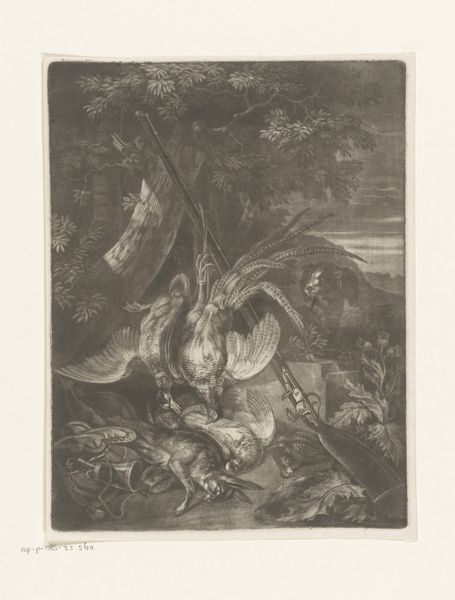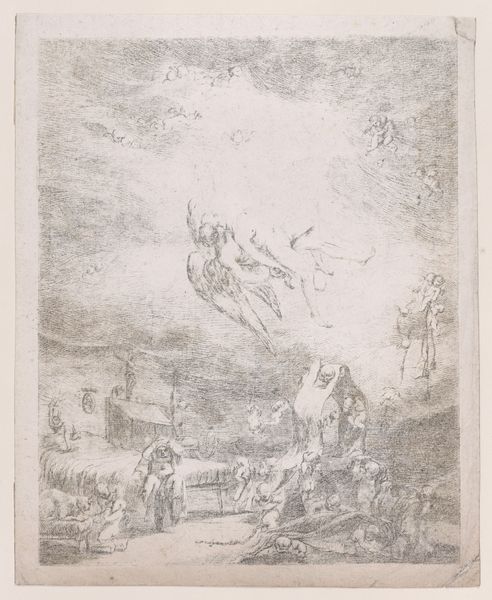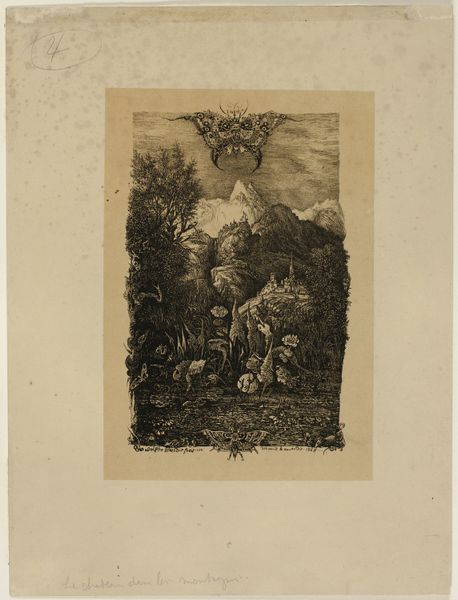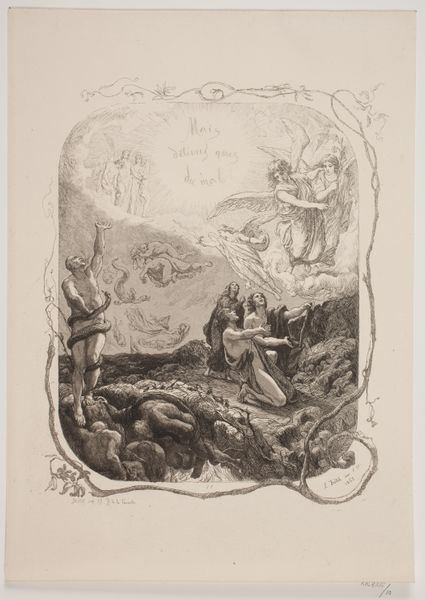
Dimensions: height 110 mm, width 74 mm
Copyright: Rijks Museum: Open Domain
Curator: Here we have "Demons Trying to Tempt Saint Anthony", an etching, engraving and ink drawing created around 1853 by Henri François Schaefels. My first impression is of a kind of theatrical chaos. Editor: Absolutely, and that feeling reflects the anxieties of a rapidly industrializing world where traditional belief systems were being questioned and subverted. Look at how Schaefels employs the historical narrative of St. Anthony's trials to engage with contemporary societal tensions. Curator: Indeed, St. Anthony, a figure representing steadfast faith, is a powerful symbol. His temptations are frequently depicted in art as allegories for the struggles between good and evil, something almost universally understood. The image taps into cultural memory around religious iconography and its continuous appeal over centuries. Editor: And how those trials often manifest in highly gendered and racialized ways! Note the leering grotesqueries surrounding Anthony, personifications of temptation that, through a post-colonial lens, speak to the historical anxieties surrounding the ‘other’ and the temptations of empire. Curator: Precisely. The demons themselves, grotesque and varied, pull from a deep well of established visual symbols. It is intriguing how Schaefels utilizes those symbols to address timeless themes of faith and moral integrity. Are those winged demons hovering above? Editor: I see them more as reflections of anxieties related to shifting social hierarchies. Angels can become demons when power structures change. Saint Anthony becomes the site where these fears converge and fight, making it less a statement about piety and more a reflection of widespread social insecurity. The composition itself seems almost claustrophobic, adding to that sense of unease. Curator: So for you the symbolism is less a commentary on individual faith, and more a manifestation of widespread social and political turmoil? Editor: Yes, because what we see as "temptation" is inherently tied to social and economic contexts, particularly during periods of disruption like the Industrial Revolution. It compels me to consider which societal groups stood to gain, and which stood to lose. Curator: Thank you. It's interesting how a traditional religious subject matter can elicit such varying contemporary interpretations. Editor: Thank you. I appreciate having a discussion where symbols meet shifting sociopolitical winds, highlighting a complex historical landscape.
Comments
No comments
Be the first to comment and join the conversation on the ultimate creative platform.
